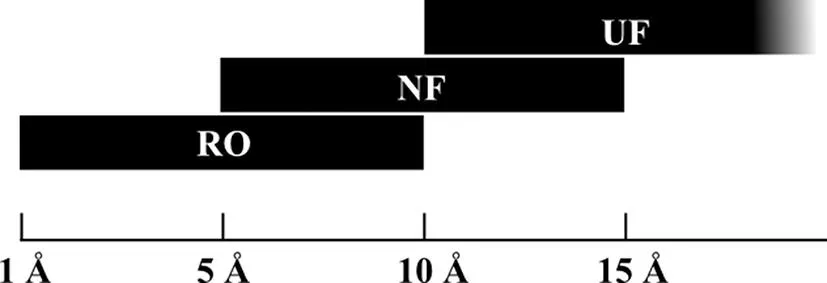
eBook - ePub
Ultrafiltration Membrane Cleaning Processes
Optimization in Seawater Desalination Plants
Guillem Gilabert-Oriol
This is a test
Buch teilen
- 124 Seiten
- English
- ePUB (handyfreundlich)
- Über iOS und Android verfügbar
eBook - ePub
Ultrafiltration Membrane Cleaning Processes
Optimization in Seawater Desalination Plants
Guillem Gilabert-Oriol
Angaben zum Buch
Buchvorschau
Inhaltsverzeichnis
Quellenangaben
Häufig gestellte Fragen
Wie kann ich mein Abo kündigen?
Gehe einfach zum Kontobereich in den Einstellungen und klicke auf „Abo kündigen“ – ganz einfach. Nachdem du gekündigt hast, bleibt deine Mitgliedschaft für den verbleibenden Abozeitraum, den du bereits bezahlt hast, aktiv. Mehr Informationen hier.
(Wie) Kann ich Bücher herunterladen?
Derzeit stehen all unsere auf Mobilgeräte reagierenden ePub-Bücher zum Download über die App zur Verfügung. Die meisten unserer PDFs stehen ebenfalls zum Download bereit; wir arbeiten daran, auch die übrigen PDFs zum Download anzubieten, bei denen dies aktuell noch nicht möglich ist. Weitere Informationen hier.
Welcher Unterschied besteht bei den Preisen zwischen den Aboplänen?
Mit beiden Aboplänen erhältst du vollen Zugang zur Bibliothek und allen Funktionen von Perlego. Die einzigen Unterschiede bestehen im Preis und dem Abozeitraum: Mit dem Jahresabo sparst du auf 12 Monate gerechnet im Vergleich zum Monatsabo rund 30 %.
Was ist Perlego?
Wir sind ein Online-Abodienst für Lehrbücher, bei dem du für weniger als den Preis eines einzelnen Buches pro Monat Zugang zu einer ganzen Online-Bibliothek erhältst. Mit über 1 Million Büchern zu über 1.000 verschiedenen Themen haben wir bestimmt alles, was du brauchst! Weitere Informationen hier.
Unterstützt Perlego Text-zu-Sprache?
Achte auf das Symbol zum Vorlesen in deinem nächsten Buch, um zu sehen, ob du es dir auch anhören kannst. Bei diesem Tool wird dir Text laut vorgelesen, wobei der Text beim Vorlesen auch grafisch hervorgehoben wird. Du kannst das Vorlesen jederzeit anhalten, beschleunigen und verlangsamen. Weitere Informationen hier.
Ist Ultrafiltration Membrane Cleaning Processes als Online-PDF/ePub verfügbar?
Ja, du hast Zugang zu Ultrafiltration Membrane Cleaning Processes von Guillem Gilabert-Oriol im PDF- und/oder ePub-Format sowie zu anderen beliebten Büchern aus Scienze fisiche & Chimica. Aus unserem Katalog stehen dir über 1 Million Bücher zur Verfügung.
Information
1 Introduction
The popularity of membranes is increasing drastically in a broad range of industrial processes, thanks to its ability to control the permeation rate of species through the membrane. This allows the design of different separation processes, where the goal is to allow one component of a mixture to permeate freely through the membrane, while the other elements have difficulties to permeate. This is achieved through different driving forces which drive each different mass transfer across the membrane. These are represented by any combination of a concentration, a pressure, a temperature or an electric potential gradient.
One of the key aspects of membranes is to effectively control the membrane fouling, which decreases the permeability of the membrane. If fouling is not properly controlled, the membrane can irreversibly lose flow.
Ultrafiltration, in particular, is a separation membrane technology based on particle size exclusion. This is achieved thanks to the different small micropores which act as a sieve and prevent the particles which are bigger than the pore diameters to flow freely through the membrane. The use of ultrafiltration as a pretreatment of the reverse osmosis in the seawater desalination application has gained special popularity in recent years. Ultrafiltration is a key factor in reducing fouling to the reverse osmosis. Among its key benefits against the conventional pretreatment are a lower footprint and a better filtrate water quality.
1.1 Membrane filtration
Membranes are classified according to their pore diameter. An overview of each membrane technology regarding its pore diameter is given in the next paragraph. In addition, Figure 1.1 provides a graphical scheme summary [1]. Figure 1.2 details the intersection region between both mass transport models [1]. The pore flow model is represented by ultrafiltration, and the solution diffusion model is represented by reverse osmosis. In the intermediate section, nanofiltration combines both models to describe its behavior. Finally, Table 1.1 illustrates some examples of typical species that are filtrated using one of the described membrane technologies, together with their typical size [1]. Therefore, using Figures 1.1 and 1.2, it is possible to assess which filtration technology will be more suitable to filtrate or concentrate one of the species shown in the table.

Figure 1.1: Membranes classified by their pore diameter.

Figure 1.2: Reverse osmosis, nanofiltration and ultrafiltration membranes classified by their pore diameter.
Table 1.1:Species with their size.
| Species | Size |
|---|---|
| H2O | 0.2 nm |
| Na+ | 0.37 nm |
| Sucrose | 1 nm |
| Hemoglobin | 7 nm |
| Influenza virus | 0.1 µm |
| Pseudomonas diminuta | 0.28 µm |
| Staphylococcus bacteria | 1 µm |
| Starch | 10 µm |
Reverse osmosis membranes have pore diameters that range from 0.1 to 1 nm [1]. These pores have the particularity that they are so small that discrete pores do not exist. Instead, the pores are formed through unstable spaces between polymer chains, which are created and faded as a result of their molecular thermal motion. These fluctuating pores represent the diffusion of species throughout the dense membranes. In contraposition, the bigger and more stable pores observed in the ultrafiltration porous membranes represent the mass flux through convection described by the pore flow model. The solution diffusion model, which is not covered in this book, makes two assumptions. The first is that the solvents dissolve inside the membrane, and thereafter they diffuse through the dense film according to the present concentration gradient. In the reverse osmosis, separation occurs because of the different solubility and mobility of each species throughout the membrane.
Nanofiltration membranes have pore diameters that range from 0.5 to 1.5 nm [1]. These pores have the particularity of being between truly microporus membranes and clearly dense films. Therefore, mass transfer through nanofiltration membranes is described using both pore flow and solution diffusion models. This happens because if membrane polymer chains are very stiff, the molecular motion of the polymer is...